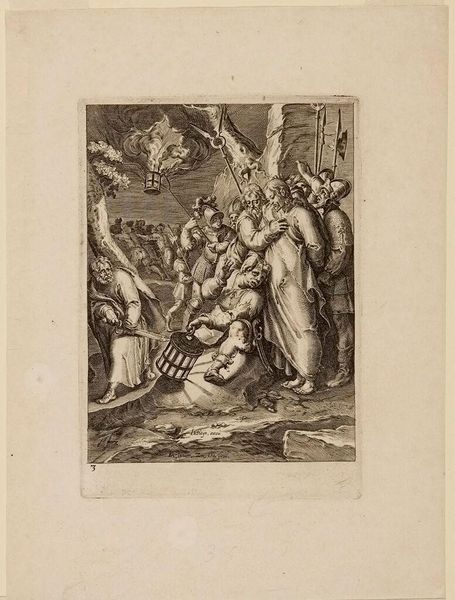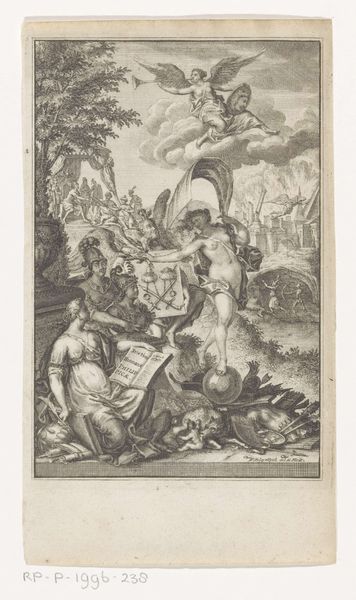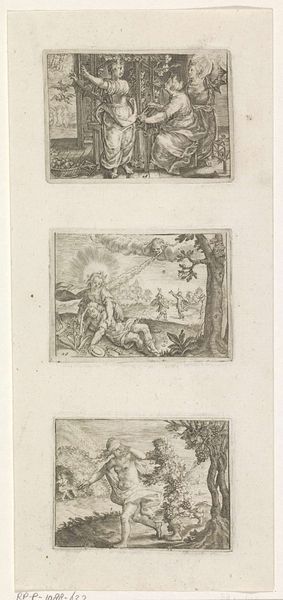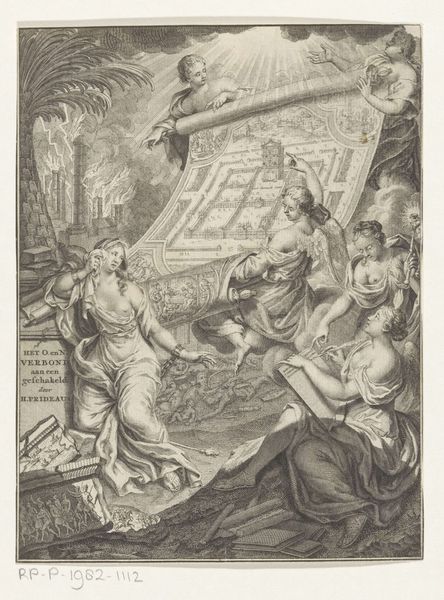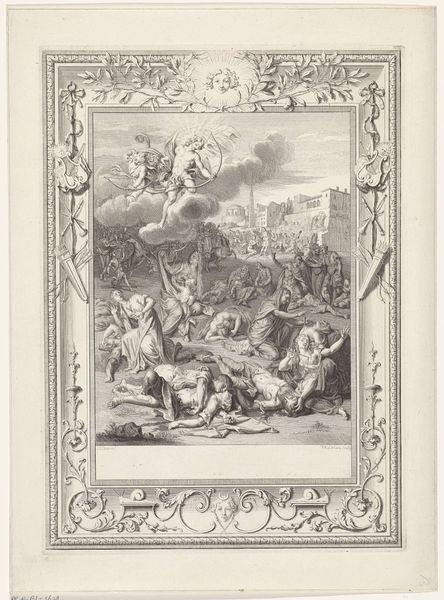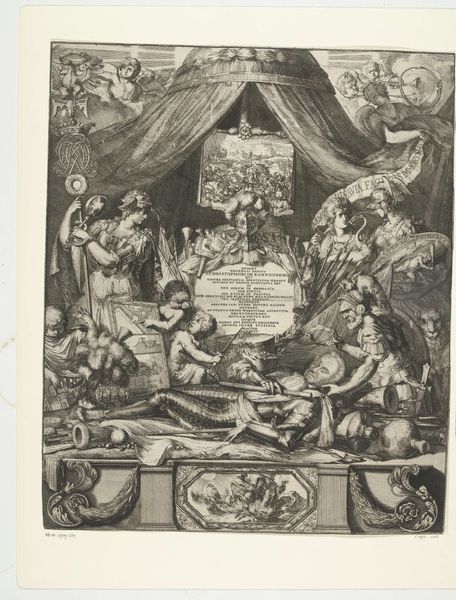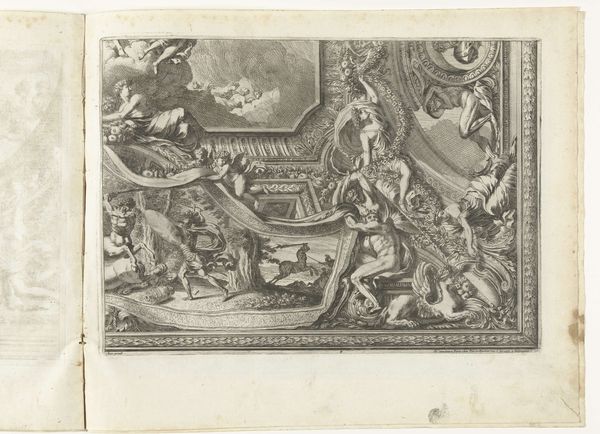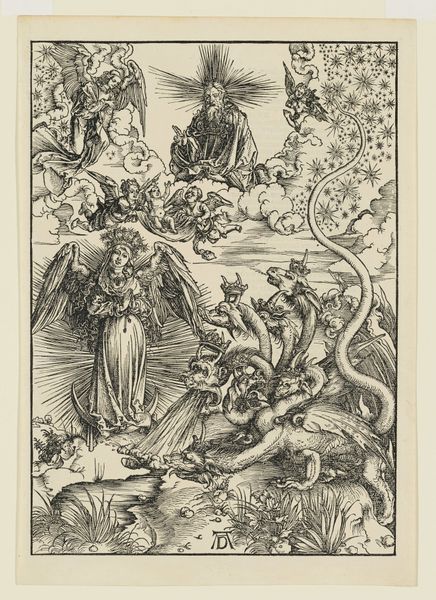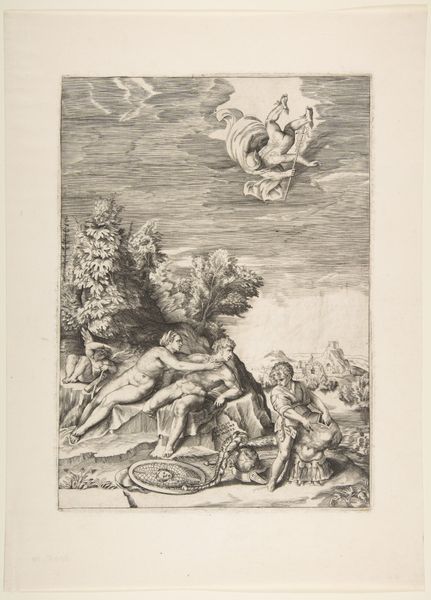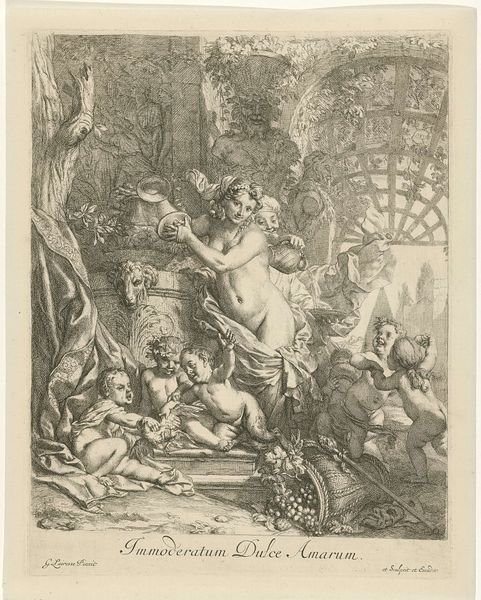
print, engraving
# print
#
mannerism
#
figuration
#
history-painting
#
nude
#
engraving
Dimensions: height 164 mm, width 111 mm
Copyright: Rijks Museum: Open Domain
Hendrick Goltzius created this small engraving, "Last Judgement," in the late 16th or early 17th century. The Protestant Reformation had a profound impact on European society in the 1500s. This was a time of religious and political upheaval. Artists navigated new territories as traditional religious narratives were questioned and reinterpreted. Here we see naked figures emerging from their graves, awaiting the judgment of Christ who sits enthroned above the clouds. An angel sounds the trumpet, summoning souls. On the left, the virtuous are carried to heaven, while the damned on the right are dragged down to hell. What does it mean to depict men and women naked before God? Stripped bare, they are equalized, their earthly status rendered irrelevant in the face of divine judgment. Goltzius masterfully captures a sense of drama and emotion, inviting viewers to reflect on their own mortality and moral choices. The engraving isn't merely a depiction of a religious event; it's a mirror reflecting the anxieties and aspirations of a society grappling with profound change.
Comments
No comments
Be the first to comment and join the conversation on the ultimate creative platform.
